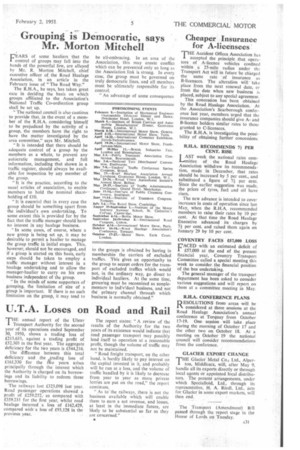U.T.A. Loses on Road and Rail
Page 33

If you've noticed an error in this article please click here to report it so we can fix it.
THE annual report of the Ulster Transport Authority for the second year of its operations ended September 30, 1950, shows a trading loss of £213,633, against a trading profit of £52,303 in the first year. The aggregate deficiency for the two years is £544,216.
The diffeience between this total deficiency and the atrading loss of £161,330 for the (6vo years arises principally through the interest which the Authority is charged on its borrowings and its liability to redeem those borrowings.
The railways lost £323,098 last year. Road passenger operations showed a profit of £259,272, as compared with £359.231 for the first year, whilst road haulage incurred a loss of £162,429, compared with a loss of £93,128 in the previous year. The report states: "A review of the results of the Authority for the two years of its existence would indicate that road passenger transport may possibly lend itself to operation at a reasonable profit, though the volume of traffic may not be maintained.
" Road freight transport, on the other hand, is hardly likely to pay interest on the capital invested in it, and probably will be run at a loss, and the volume of traffic handled by it is likely to decrease from year to year as more private lorries are put on the road," the report continues.
" As to' the railways, there is not the business available which will enable them to earn a net revenue, and losses, at least in the immediate future, are likely to be substantial so far as they are concerned."
•




























































































